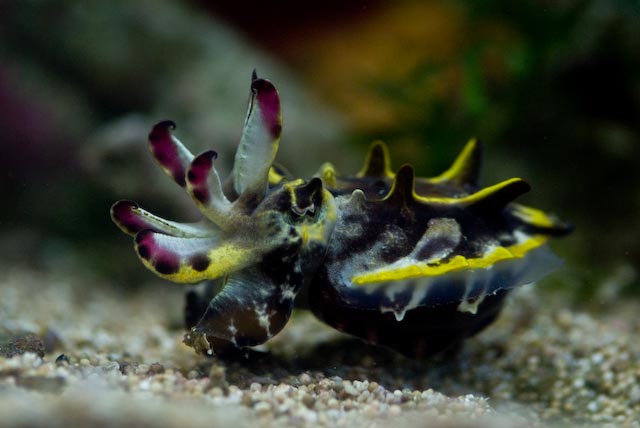Surprise! I’m a coral addict!!
I hope I’m not overdoing it with my enthusiasm for corals, but it’s about to get a whole ‘nother level of fangirl for Scolymia lacera.
If you’re like me, every time you get it the water, scuba diving comes with a wish list of corals (or fish) you want to see. In the Caribbean, my list includes the corals I have yet to find, outstanding colonies, and always a big bold SCOLYMIA written at the top.
There are two species of Scolymia in the Caribbean, the smaller Scolymia cubensis which we wrote about last week, and the big momma of all Caribbean corals, Scolymia lacera. Now, not all corals are created equal and sure all corals are beautiful, but there will always be that one extraordinary specimen that shines brighter than the rest.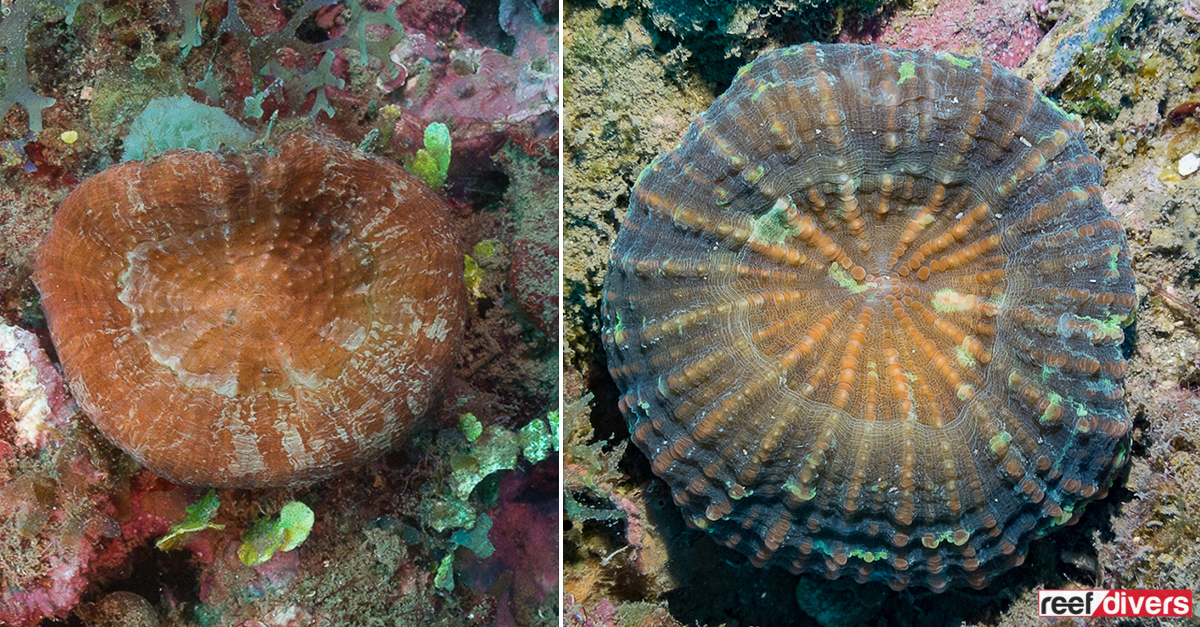
Scolymia corals are the pinnacle, and a big reason I still get excited about Caribbean diving. You can never predict the endless combinations of colors, patterns, or stripes. If there was ever a definition of a diamond in the rough, this is it.
I will admit the cover image may reflect my artistic interpretation of this coral’s true under appreciated beauty, but after you see the true to life version below I think you will agree it’s not far. We found this coral in the perfect Scolymia habitat while diving in Tela Honduras, 18m (60ft) deep on a murky silty reef.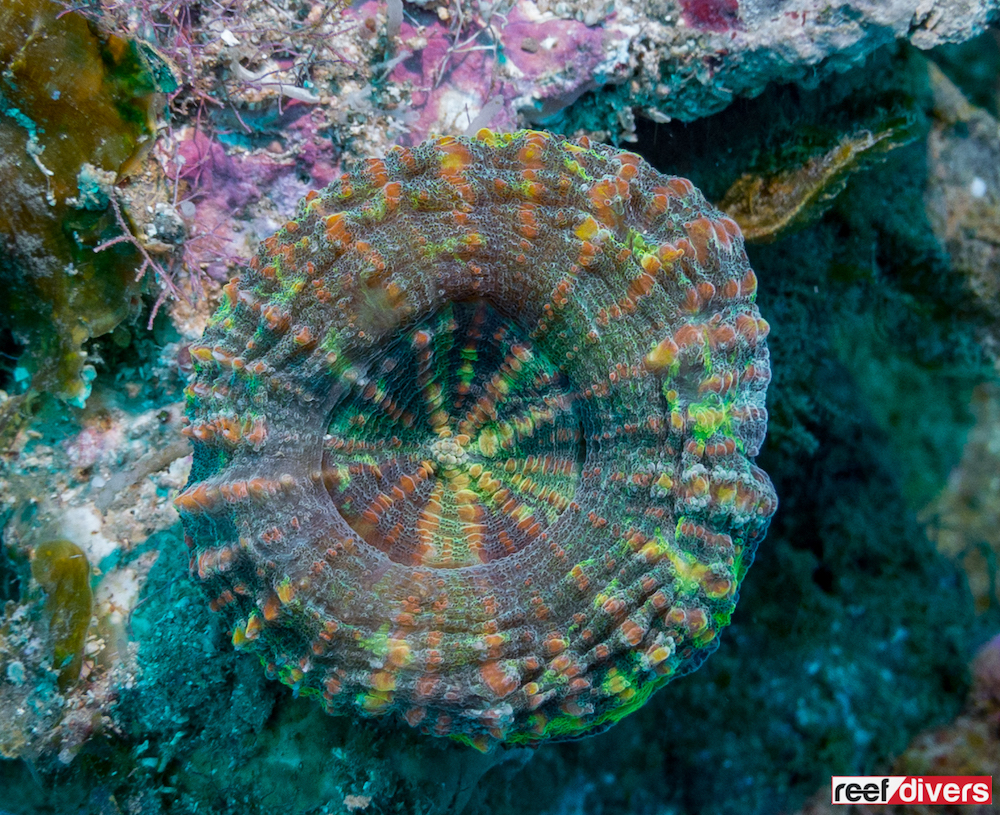
Coral Colors
Corals get their colors in two ways. Corals have a photosynthetic marine algae living inside their cells which converts sunlight into energy for the coral. The brownish green color you see in corals under normal daylights is from these algae called zooxanthellae. When corals are bleached, they turn white because they expel the zooxanthellae.
But then there are the blues, the greens, purples, and reds. Some corals are predictable, Acropora cervicornis will always be yellow, gold, or golden yellow. Mustard hill coral is usually a solid yellow, but sometimes it can be slightly green, or pink, or gray. But not Scolymia, nope this coral took a dose of psychedelics and never looked back.
The bright colors in Scolymia (and all corals) come from a family of Nobel prize-winning fluorescent proteins. Without overwhelming you with science, the short answer would be there is a protein pigment in the tissue of the coral which absorbs light in one color and re-emits the light in a different color. These pigments look different under white light, daylight, and blue light and give corals their bright colors.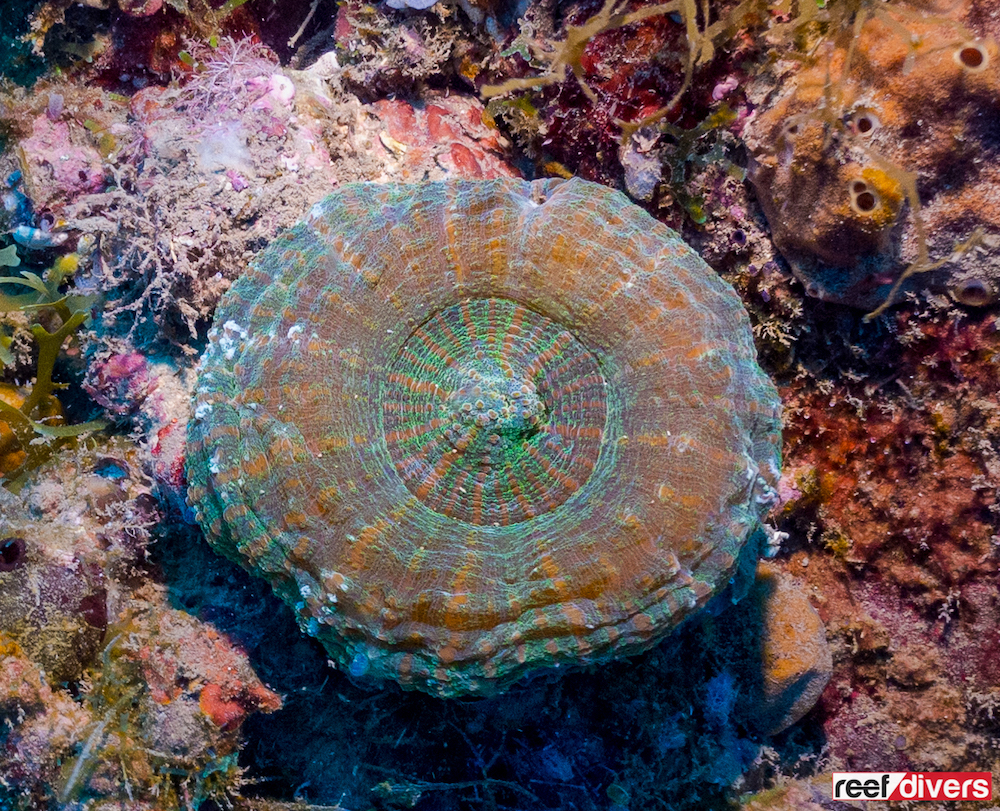
Diving Deeper Into Coral Color
The deeper you dive the more blue corals will appear. Any deeper than a few meters and longer wavelengths of light are quickly absorbed in the water column. If you bring a flashlight or have an external LED or strobe light for your camera you can bring these colors, especially reds, back into the environment.
The proteins inside a coral will re-emit a color when you illuminate it with an external light. Using only a white light, you will start to see brighter reds, greens, purples, and pinks. Some of the light is absorbed into the protein while the color we see is what is being reflected or re-emitted.
If you want to see bright neon colors, like the cover image, you can. All you need to do is dive with a blue or ultraviolet light. If you’ve ever tried a fluorescent night dive you will know what I’m talking about!
Under blue light, the protein re-emits a fluorescent pigment as biofluorescence that glows a bright neon color. This color is invisible under normal light conditions and you can only see it when you excite the pigments using shorter wavelengths of light such as blue or ultraviolet.
Biofluorescence should not be confused with bioluminescent, or phosphorescence. You can learn more about bioluminescence and fluorescence on the Luminescence Lab website.
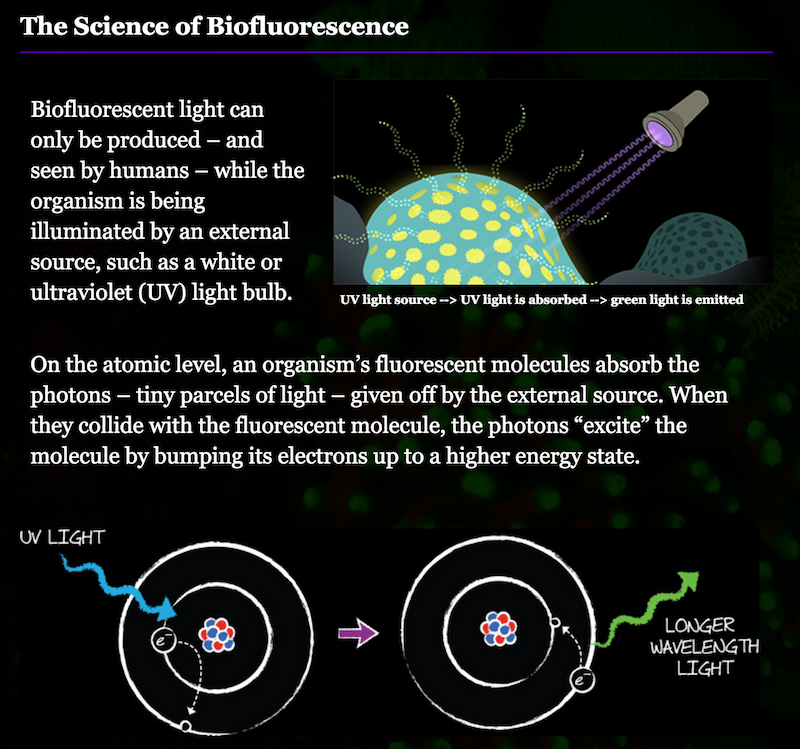
Fleshy Disk Coral
The common name for Scolymia lacera is the Fleshy Disk Coral, and for good reason. Mature colonies of Scolymia lacera can be up to 15cm (6 inch) in diameter making it the biggest single polyp species in the Caribbean.
The disk coral has a fleshy mantle with a mouth at the center of the coral. You might think this is a soft coral, but under the fleshy polyp is a hard calcium skeleton.
The best way to tell the two Scolymia species apart is size, however, for smaller colonies, this can be tricky. Instead, you should look for the lines of skeletal teeth radiating from the center of the polyp towards the edge of the coral.
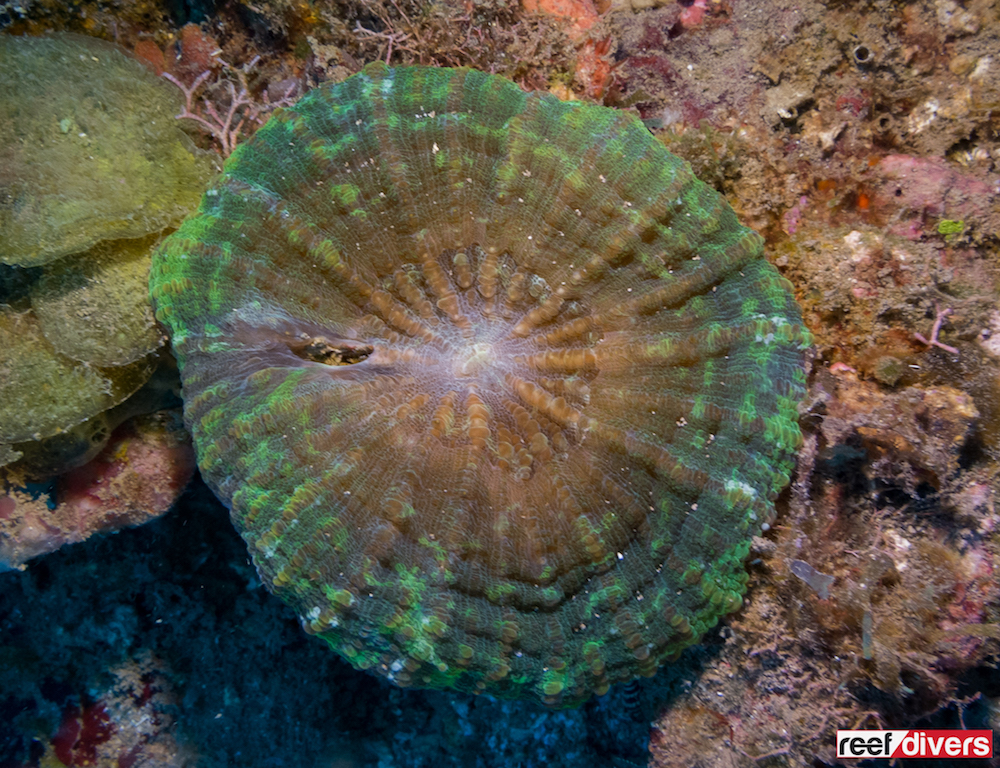
If you liked this article share it will your friends and check out the rest of our Caribbean Coral Identification articles.
The Coral Diaries series is a list of corals we have seen while diving around the world. We’ve created this series so that you can learn more about corals, and how to identify them on the reef. We encourage you to send us your coral pictures and leave a comment in the section below to learn more about the interesting species you’ve found while diving.


